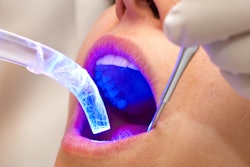A new study that tested whether dental restoration materials could affect children's physical growth found no significant differences in physical development in children who received amalgam or composite fillings (Journal of Dental Research, September 13, 2012).
A previous secondary analysis of the same dataset found that children treated with composites had more self-reported psychosocial problems after five years compared with children treated with amalgam.
As part of the New England Children's Amalgam Trial (CAT), children ages 6-10 at baseline with more than two decayed posterior teeth were randomized to receive amalgam or composites (bisphenol A diglycidyl dimethacrylate composite for permanent teeth, urethane-dimethacrylate-based compomer for primary teeth) for treatment of posterior caries throughout follow-up.
Study data collectors measured height, weight, and body fat percentage annually. Menarche status was reported annually as no or yes, and if yes, month and year of menarche.
In this secondary analysis, the authors analyzed body fat, body mass index, and height velocity of children (218 boys, 256 girls) and in an exploratory analyses among girls in one geographic stratum (113), age at menarche.
Overall, they found no significant differences in physical development over five years in boys or girls treated with composites or amalgam. Girls assigned to composites had a lower hazard of menarche during follow-up.
Additional studies examining these restoration materials in relation to age at menarche are warranted, the authors noted.


















